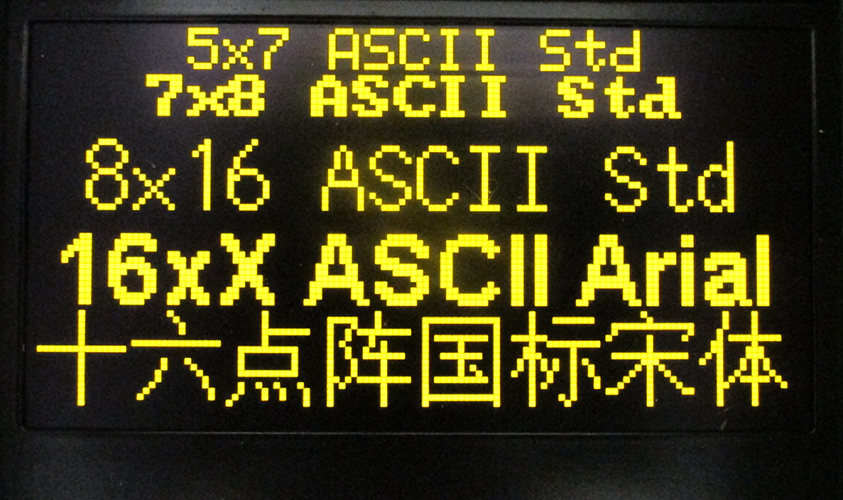What Determines the Thickness of an OLED Display?

OLED, short for Organic Light Emitting Diode, represents an upgraded display technology that leveled up the visual experiences for consumers. Unlike traditional LCDs, OLED displays generate their own light through organic compounds when an electric current passes through them. This self-emissive property provides significant benefits.
OLEDs are famous for exceptional contrast ratios with deep, true blacks and vibrant, lifelike colors. Beyond aesthetics, OLEDs also offer energy efficiency, consuming power only for the illuminated pixels. These modules have already surpassed LCDs and TFTs in terms of thinness as well. Let’s learn how!
Differences Between an OLED and a Graphic LCD
Let’s look at the differences first to understand why OLEDs are unique.
OLED displays and Graphic LCDs differ significantly in their operating principles and capabilities. OLEDs emit light directly from organic compounds, generating superior image quality with vibrant colors, deep blacks, and wide viewing angles. They’re very effective in multimedia applications and high-resolution graphics.
Meanwhile, Graphic LCDs operate on passive matrix addressing, displaying text and simple graphics in monochrome or limited color. They are common in devices like digital watches and industrial equipment. Graphic LCDs offer essential image quality with lower power consumption compared to TFTs. While TFTs are ideal for high-resolution graphics and multimedia, Graphic LCDs are suitable for more straightforward displays where power efficiency and basic image rendering suffice.
For a comparison between TFTs and OLEDs, check out this article.
Components of OLED Displays
Understanding the components of an OLED is the first step in analyzing its thickness.
Substrate
The substrate serves as the foundation for the OLED display. It adds crucial structural support and a base for other layers. It is typically made of glass or plastic and can be rigid or flexible. The rigidity depends on the desired form factor of the display.
Anode
The anode is a transparent electrode typically made of indium tin oxide (ITO) deposited on the substrate. It serves as the positive electrode and facilitates the flow of electrical current into the OLED structure.
Organic Layers
OLED displays contain multiple organic layers sandwiched between the anode and cathode. These layers include:
- Emissive Layer: This layer contains organic molecules that emit light when an electric current passes through them. Different organic materials can emit different colors of light.
- Hole Transport Layer: This layer facilitates the movement of positively charged “holes” from the anode to the emissive layer.
- Electron Transport Layer: This layer facilitates the movement of negatively charged electrons from the cathode to the emissive layer.
- Other Layers: Additional layers, such as the hole and electron injection layers, may be included to improve your OLED device efficiency and performance.
Cathode
The cathode is another transparent electrode typically consisting of a low-work function metal like aluminum or calcium. The negative electrode completes the electrical circuit, allowing electrons to flow out of the OLED structure.
Encapsulation Layer
The encapsulation layer is a thin film that protects the organic layers from moisture and oxygen. These two factors can degrade your OLED performance over time. It is typically made of transparent glass or plastic and deposited on the OLED stack.
Pixel Definition
OLED displays are composed of millions of individual pixels, each containing red, green, and blue sub-pixels that emit light independently. The arrangement and size of these pixels determine the resolution and image quality of the display.
Looking to modernize your LCDs?
Building an OLED Display
Building an OLED display involves several key steps:
- The design starts with a substrate, typically made of glass, that serves as the foundation for the OLED display.
- Deposit transparent electrodes, such as indium tin oxide (ITO), onto the substrate. These electrodes will serve as the anode and cathode of the OLED.
- Sequentially deposit organic layers onto the substrate using thermal evaporation or chemical vapor deposition techniques. These layers include the emissive, hole, and electron transport layers.
- Apply an encapsulation layer to protect the organic layers from moisture and oxygen, which can degrade OLED performance over time. This layer is typically deposited on top of the organic layers.
- Define the individual pixels on the OLED display by patterning the organic layers and electrodes. Each pixel consists of red, green, and blue sub-pixels, which emit light independently to produce a wide range of colors.
- Conduct rigorous testing to ensure the OLED display meets performance specifications, including brightness, color accuracy, and uniformity. This may involve measuring electrical characteristics, luminance levels, and stability over time.
- Once the OLED display has passed quality control, it can be integrated into various products, such as heart monitors, wearable devices, and automotive displays. This may involve bonding the OLED display to other components, such as driver circuits and touch panels, to create a functional device.
Factors Affecting the Thickness of Your OLED
Several factors influence the thickness of OLED displays, including:
Organic Layer Thickness
The thickness of the organic layers within the OLED structure directly impacts the overall thickness of the display. An emissive organic layer usually ranges between 10 to 100 nanometers.
Encapsulation Layers
Encapsulation layers are essential for protecting the organic materials from moisture and oxygen, increasing the longevity of OLED displays. Thinner encapsulation layers contribute to a slimmer overall profile without compromising durability.
Backplane Technology
The type of backplane technology used in OLED displays can influence their thickness. Advances in backplane technologies, such as low-temperature polysilicon (LTPS) and oxide TFTs, enable the production of thinner and more energy-efficient OLED panels.
Conclusion
OLED displays are the most advanced thin display modules nowadays. Their high resolution, incredible contrast, advanced design, and power efficiency give them superiority among display modules. However, they’re also quite expensive and may not be entirely suitable for small electronic products.